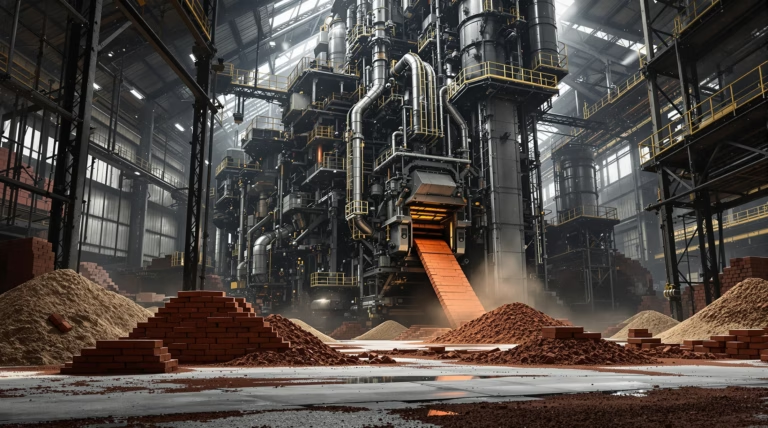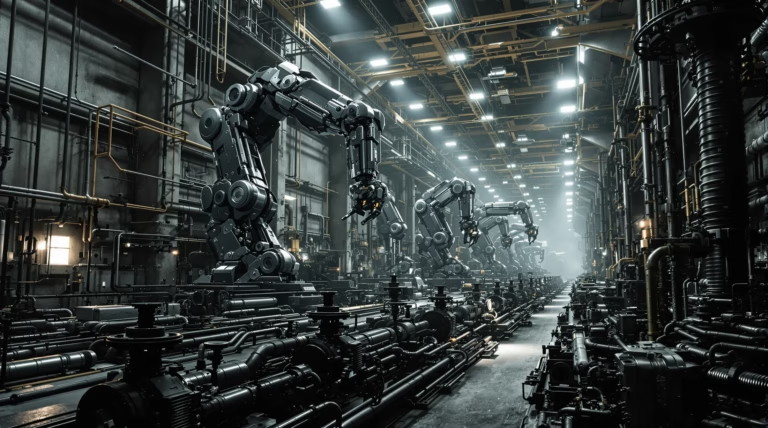Factory Equipment Suppliers: Your Guide to Choosing the Best Options
Looking to optimize your manufacturing operations with the right industrial equipment? Understanding how to choose reliable factory equipment suppliers is crucial for your business success. Let’s explore the essential aspects of selecting and working with these vital industry partners.
Understanding Factory Equipment Suppliers
Factory equipment suppliers serve as the cornerstone of industrial operations, providing essential machinery, tools, and resources for manufacturing processes. These suppliers support diverse industries, from automotive and textiles to food processing and electronics manufacturing, enabling businesses to establish efficient production lines and maintain high-quality standards.
Finding the right supplier requires careful consideration of their expertise, specialization, and service capabilities. Whether you’re establishing a new facility or upgrading existing machinery, partnering with reputable suppliers ensures access to advanced technology and reliable support throughout your equipment’s lifecycle.
What Are Factory Equipment Suppliers?
Factory equipment suppliers are specialized businesses that bridge the gap between equipment manufacturers and end-users. They offer expert guidance on selecting appropriate machinery for specific applications while providing comprehensive services including:
- Installation assistance and technical support
- Operator training programs
- Ongoing maintenance services
- Equipment customization options
- Industry-specific consulting
Types of Equipment Offered
| Category | Equipment Types |
|---|---|
| Heavy Machinery | Auto lifts, excavators, industrial presses, metal forming equipment |
| Production Line | Conveyor systems, packaging machinery, automated assembly tools |
| Electronics Manufacturing | SMT equipment, THT machinery, precision tools |
| Facility Infrastructure | Metal carports, storage systems, material handling equipment, industrial furniture |
Key Features to Look for in Factory Equipment Suppliers
The best suppliers function as strategic partners, offering valuable insights into market trends and technology advancements. They should demonstrate expertise in your specific industry while providing comprehensive solutions that enhance operational efficiency.
Importance of Quality and Durability
High-quality industrial equipment directly impacts your operation’s success through:
- Extended service life and reduced downtime
- Lower maintenance and replacement costs
- Superior materials and precision engineering
- Robust construction for continuous industrial use
- Comprehensive warranty coverage
Evaluating Pricing and Shipping Options
When assessing suppliers, consider their pricing structures and shipping capabilities. Look for:
- Wholesale pricing models with volume discounts
- Transparent pricing breakdowns
- Multiple shipping options with tracking capabilities
- Strategic warehouse locations
- Emergency shipping services for critical components
- Clear policies on shipping damage and returns
Ensuring Safety and Compliance
In the manufacturing industry, safety and compliance are fundamental business practices that protect workers, enhance productivity, and maintain company reputation. Implementing thorough safety protocols and meeting industry regulations directly improves operational efficiency by reducing workplace incidents, minimizing downtime, and preventing costly penalties. Factory equipment suppliers are essential partners in this process, providing specialized safety equipment that meets stringent industry standards.
Collaboration with experienced equipment suppliers who understand your industry’s compliance requirements can optimize safety management efforts. These partners deliver value beyond equipment sales through implementation guidance, training resources, and regulatory updates. This partnership enables manufacturers to develop preventive safety measures rather than reactive solutions, fostering a workplace culture where safety and efficiency coexist.
Essential Safety Products
- Machine guarding systems – physical barriers, light curtains, and interlocking devices
- Personal protective equipment (PPE) – impact-resistant eyewear, hearing protection, respirators
- Emergency equipment – eyewash stations, first aid kits, fire suppression systems
- Ergonomic safety products – designed to reduce physical strain
- Smart PPE – integrated sensors for environmental monitoring and hazard alerts
When selecting safety equipment, prioritize suppliers offering comprehensive product lines with various protection levels, detailed specifications, and demonstrated compliance with safety standards. The most effective safety equipment combines maximum protection with practical usability, enabling efficient work while maintaining safety.
Compliance with Industry Standards
| Regulatory Body | Focus Area |
|---|---|
| OSHA | Workplace safety and health standards |
| ISO | International quality and safety standards |
| ANSI | American national standards |
Progressive manufacturers use compliance as a catalyst for operational improvements. Standardized safety protocols often result in more consistent production processes and higher product quality. Quality management software can streamline compliance tracking, maintenance scheduling, and training documentation. Regular safety audits using supplier-provided checklists help identify potential issues proactively, transforming safety requirements into a competitive advantage that enhances both operational efficiency and workforce protection.
Utilizing Technology and Resources
Modern manufacturers must leverage advanced technology solutions to maximize operational efficiency. Mobile applications for warehouse and production management enable:
- Real-time inventory tracking
- Instant team communication
- Data-driven decision making
- Equipment operation monitoring
- Quality control management
- Maintenance scheduling
Automation technologies represent a transformative opportunity for manufacturing operations. These solutions excel at performing repetitive tasks with superior speed, precision, and consistency compared to manual methods. Key automation components include:
- Programmable logic controllers (PLCs)
- Industrial robotics
- Automated guided vehicles (AGVs)
- Advanced material handling systems
- Quality inspection systems
Choosing the Right Supplier for Your Needs
A strategic approach to supplier selection requires balancing specific manufacturing requirements with long-term operational goals. Begin by identifying technology and equipment dimensions that integrate with your facility’s space and workflow patterns. Equipment should be evaluated both individually and as part of your complete operational ecosystem.
| Evaluation Factor | Consideration Points |
|---|---|
| Technical Requirements | Equipment specifications, compatibility, integration capabilities |
| Service Coverage | Warranty terms, maintenance support, technical assistance |
| Industry Expertise | Sector-specific experience, customization abilities, problem-solving track record |
Assessing Supplier Reputation and Reliability
Evaluate suppliers through customer testimonials, case studies, and industry references specific to your sector. Focus on evidence of long-term client relationships and problem-solving capabilities. Consider these critical support elements:
- Service response times
- Technical support availability
- Replacement parts accessibility
- Preventative maintenance programs
- Remote monitoring capabilities
- Emergency repair services
Making the Final Decision
Create a decision matrix weighing critical factors against your business requirements. Include considerations such as initial cost, lifetime value, technical specifications, and after-sales support. Conduct site visits and request equipment demonstrations to verify capabilities firsthand.
Focus on suppliers offering comprehensive implementation support, including installation services, operator training, and documentation. Review contract terms carefully, particularly warranty limitations, service level agreements, and upgrade paths. Remember that optimal value often extends beyond the initial price point when considering total operational impact.




